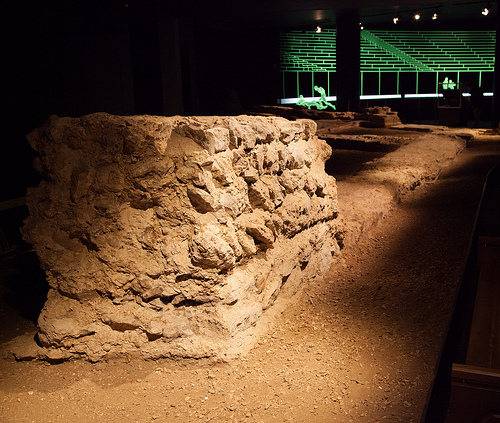London’s Hidden Roman Amphitheatre
It took more than a hundred years of searching to find, but in 1988 archaeologists finally discovered a Roman amphitheatre buried beneath the Guildhall. What made this discovery more of a surprise was that it was found well within the old Roman City walls, whereas in other cities amphitheatres that had been discovered had all been found outside the walls of the city. Something was definitely different about this one. Upon investigation it was found that the structure had an incredible history, the origins of its construction were dated back to AD70, at which point the amphitheatre was just a basic wooden building, but as the decades and centuries passed the amphitheatre grew in size, until by the time the second century came around it could comfortably accommodate around six thousand people.

A Public Venue
This was very much a place where the local population gathered. Shows would be brutal and often consisted of horrific animal fights, gladiatorial battles and of course the ever popular public executions. When the Romans left Britain during the fourth century the amphitheatre was left empty, much of the structure was removed and used as building materials for other construction, leaving nothing but a ruin in its wake. And so it stayed for several centuries, abandoned, the city growing all around it and creeping closer and closer to its decaying structure.
By the eleventh century the amphitheatre was at the heart of a Viking settlement, small wooden dwellings which were eventually replaced with the very first incarnation of the Guildhall, something which today’s Londoners are particularly familiar with. Just as it did at the peak of its time as the Roman Amphitheatre the new Guildhall once again became the centre of public attention in the city.
Going Underground
Take a look at the ground as you enter the Guildhall Yard, and you will notice a thick line of dark coloured stone which curves around the yard. This line of stone follows the original outline of the old Roman Amphitheatre, which should give you some idea of just how large the original structure was. But to see what remains of the old amphitheatre you will have to venture underground, as the remains are located around eight metres below the current ground level. Here is where they are buried, once covered over by centuries of ancient debris and rubbish.
To enter the ruins or remains of the building you need to purchase a ticket which will grant you access to the Guildhall Art Gallery from where you can enter the ruins – both access to the ruins and the gallery are included in the ticket price. Once you get down to the original floor level you will be able to see what remains of the original amphitheatre walls, the original Roman drainage system and what remains of the sand that was used to absorb the blood on the arena floor. If you are having trouble picturing the amphitheatre in action there is a digital projection to give your imagination a boost.

